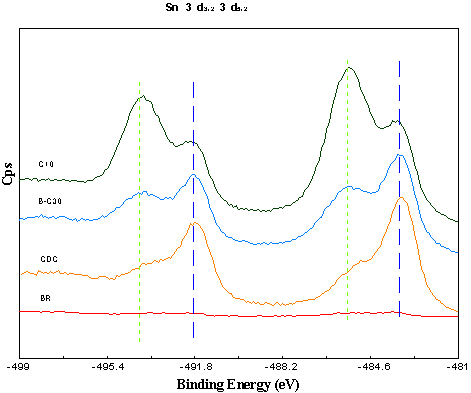XPS/UPS

Examples:
- Polarons in oxidic semiconductors - the SrTiO3 case
- Determination of the Vacuum Level in NEXAFS-spectra by Selected-Yield-NEXAFS
Tinplate: a XPS study
XPS spectra exhibit high surface sensitivity and can give very useful information regarding the qualitative and semi-quantitative composition of the out most layer. In all cases where a passivation treatment has been applied there is a clear second peak of the Sn 3 s doublet. The doublet with binding energies - 491,9 and -483,4 eV is corresponding to metallic Sn wheras the doublet - 493,4 and -484,9 eV is corresponding to SnO2. In the literature, the existence of metallic Sn had been always attributed to the substrate, taking into account that the thickness of a typical chromate passivation layer is in the area of 2 nm and the escape depth of the photoelectronics can be in the ar ea of 5nm. In the case of the B-C30 treatment a quite interesting behavior can be observed.

